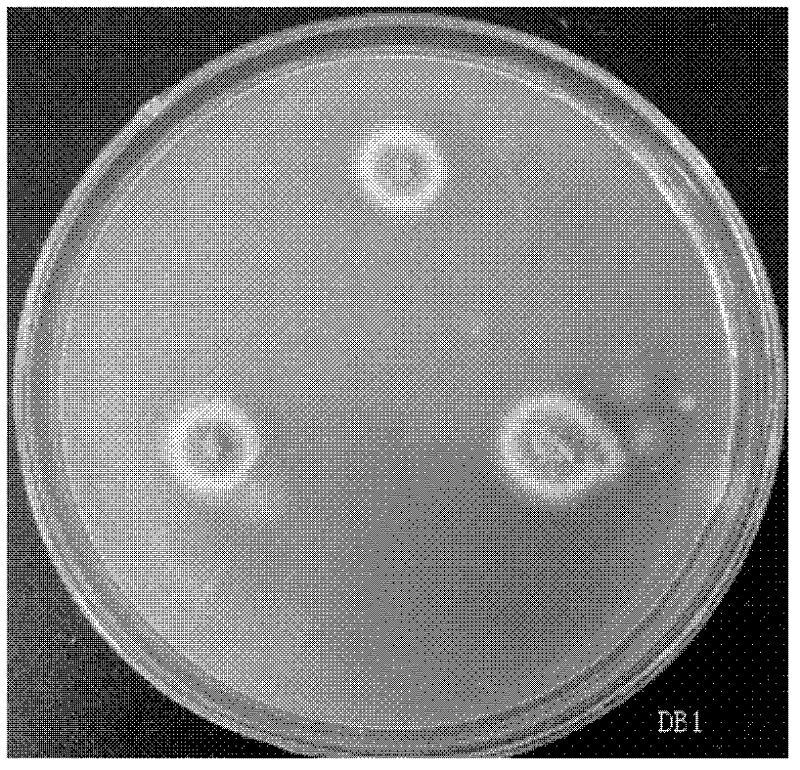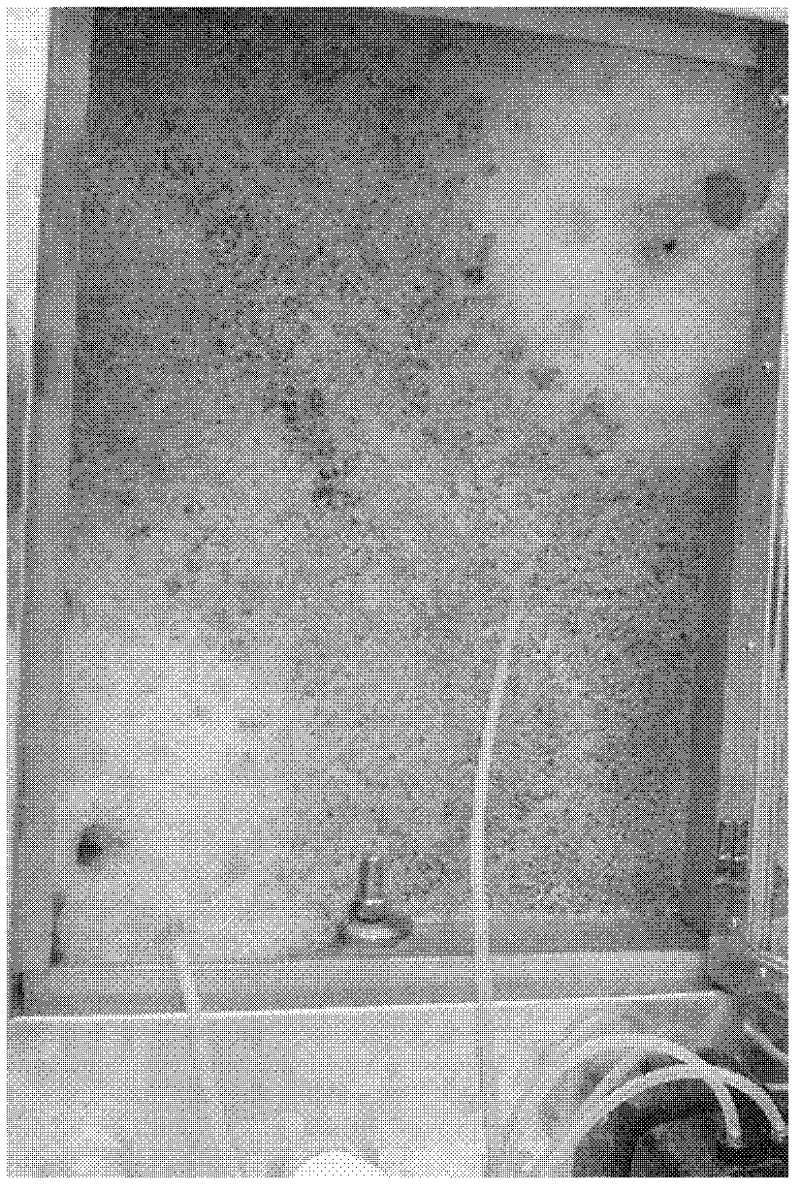Penicillium purpurogenum DB1 strain and preparation and application thereof
A technology for producing Penicillium purpureus and strains, applied in biochemical equipment and methods, fungi, textiles and papermaking, etc., can solve problems such as large equipment loss, high energy consumption and pollution in chemical degumming process
- Summary
- Abstract
- Description
- Claims
- Application Information
AI Technical Summary
Problems solved by technology
Method used
Image
Examples
Embodiment 1
[0042] Screening and Obtaining of Flax Degumming Strains
[0043] (1) Put rotten seaweed and enrichment medium at a ratio of 1g:20ml in the enrichment medium and culture it at room temperature for 30 days, then take 0.1ml of enrichment medium and spread it on the separation medium, and let it stand at 30°C Cultivate for 1 to 4 days to obtain the dominant strain of wild-type flax biological treatment;
[0044] Among them, the formula of the enrichment medium is: 5 g of flax powder, 200 ml of tap water, and the pH is natural; the formula of the separation medium is: 5 g of flax powder, (NH 4 ) 2 SO 4 5g, K 2 HPO 4 1g, MgSO 4 0.5g, KCl 0.5g, FeSO 4 0.01, 20g agar, 1000mL water, adjust the pH to 7-7.2 with NaOH;
[0045] (2) Inoculate the bacterial strain obtained in the step (1) into flax lignin nutrient medium, and culture at 28° C. for 72 hours. Flax lignin nutrient medium, its components include: flax lignin 2g, NaNO 3 3g, K 2 HPO 4 0.5g, MgSO 4 1g, 20g agar...
Embodiment 2
[0048] Preparation of fermentation broth:
[0049] (1) The Penicillium purpurea DB1 strain was stored in potato dextrose agar medium, cultured at 30°C and 220 rpm for 48 hours, and added freezing buffer; the freezing buffer consisted of 0.0627 g of potassium dihydrogen phosphate, 0.0177 g of dipotassium hydrogen phosphate, citric acid Prepared by adding 0.0588g of sodium, 0.02645g of magnesium sulfate heptahydrate, 10ml of glycerin, and adding water to 100ml.
[0050] (2) In the sterilized and cooled 50mL potato dextrose medium, insert the bacteria ring obtained in step (1), and shake the flask for 48 hours at a rotation speed of 220r / min and a temperature of 30°C;
[0051](3) Inoculate the culture medium obtained in step (2) into 5 L of flax lignin fermentation medium, and shake the flask for 48 hours at a rotation speed of 220 r / min and a temperature of 30° C. to obtain a fermentation broth; wherein, the formulation of the flax fermentation medium is: : Flax raw hemp lignin...
Embodiment 3
[0053] The flax degumming process is as follows:
[0054] Put 5g of the original stem of flax into a 250ml conical flask, put the original flax stem and the fermented bacterium liquid of Example 2 into the conical flask according to the bath ratio of 1:20, the liquid volume is 100ml, at 40°C, in a shaker at 200rpm Respectively degumming for 1 day; when the degumming time is up, remove the degumming solution and stop the biological treatment. The biologically treated raw flax stems are inactivated, and the process is as follows: the biologically treated flax raw stems are mixed with the degumming solution at a ratio of 1:10, and treated at 70°C for 3 hours, wherein the peroxide The dosage is 3% of the original flax stem, the dosage of urea is 0.05% of the original flax stem, the dosage of sodium tripolyphosphate is 2% of the original flax stem, and the dosage of disodium edetate is 0.1% of the original flax stem . After degumming, 2130 flax fibers for textile can be produced....
PUM
 Login to View More
Login to View More Abstract
Description
Claims
Application Information
 Login to View More
Login to View More - R&D
- Intellectual Property
- Life Sciences
- Materials
- Tech Scout
- Unparalleled Data Quality
- Higher Quality Content
- 60% Fewer Hallucinations
Browse by: Latest US Patents, China's latest patents, Technical Efficacy Thesaurus, Application Domain, Technology Topic, Popular Technical Reports.
© 2025 PatSnap. All rights reserved.Legal|Privacy policy|Modern Slavery Act Transparency Statement|Sitemap|About US| Contact US: help@patsnap.com



